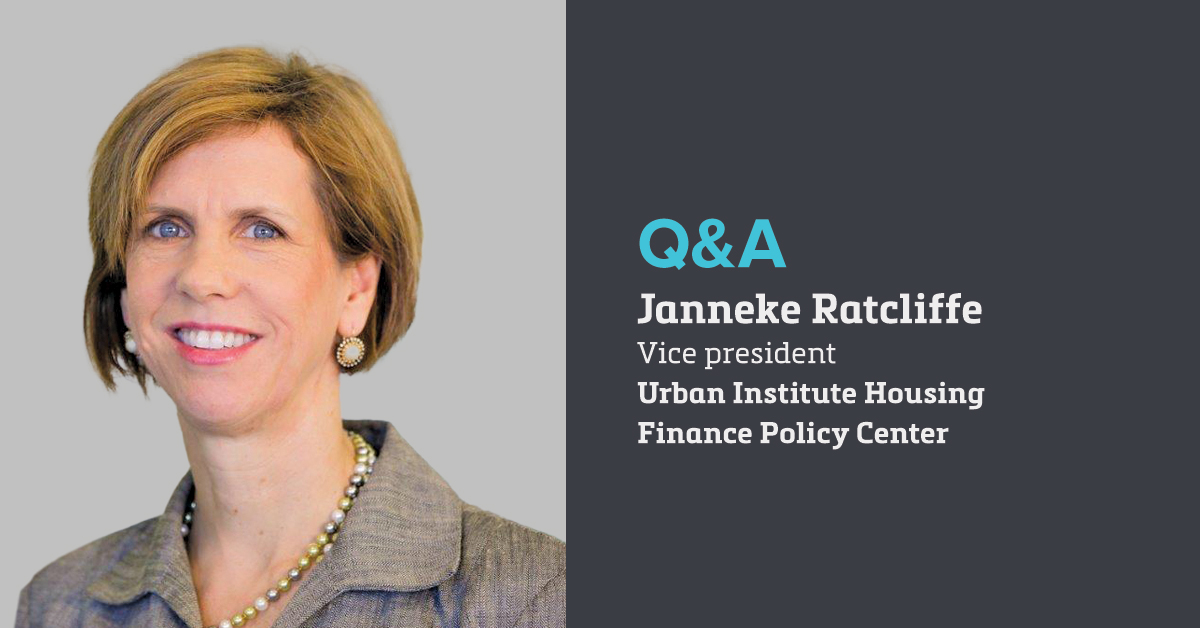After World War II, the U.S. government realized there was an emergency shortage of housing. Federal policymakers promoted home production in a number of ways, including limits to commercial construction, the removal of import tariffs on lumber and enabling families to buy homes with low-downpayment mortgages.
These steps worked, said Janneke Ratcliffe, vice president of the Urban Institute’s Housing Finance Policy Center. In an article for CNN Business, Ratcliffe noted that 15 million new homes were built from 1950 to 1959, while the homeownership rate rose from 43.6% in 1940 to 61.9% in 1960. (She points out that people of color did not fully benefit from this effort.) And she argues that the U.S. is facing another housing crisis.
“The post-World War II solution was build, build, build — especially build affordable housing,” Ratcliffe said. “I think building is part of the solution (now), with the traditional stick-built homes, but there’s a whole lot else that needs to happen as well.”
She said actions could include reducing the housing-obsolescence rate, promoting condominiums and manufactured housing, and rethinking risk tolerance in the mortgage process. Ratcliffe spoke to Scotsman Guide about ways to address the current housing shortage.
You believe that the nation is facing an affordable-housing crisis, right?
I do. We are somewhere between 3.8 million to 5 million housing units shy of what is needed. Maybe one of the most telling things is, using the latest report from CoreLogic, rent prices (for single-family homes) are up 13% year over year as of February compared to the year before and house prices are up 20% year over year.
It’s not like there’s going to be one silver bullet to solve this. You’re going to need to come at it from lots of different angles.
What does that mean for people and how do you convince policymakers that there is a crisis?
Since both rent and the cost of housing are rising in tandem, it’s making it harder and harder for renters to be able to save enough money and get that economic footing to turn around and buy a home.
The Biden administration just announced its plans (this past May). The White House has voiced that it is trying to manage inflation, but inflation is hard to manage when house prices are such a big part of consumer expenditures. As long as house prices are going up, you’re going to end up having some upward pressure on prices (for other consumer goods).
What is the administration planning to do about it?
They understand that there’s a supply crisis. Recognizing that there’s this big shortage that’s been building for a long time, there’s a need to create more units, both on the affordable rental and on the ownership side. The administration just announced some moves that clearly are supply-side-oriented. As the White House announcement conveys, it’s not like there’s going to be one silver bullet to solve this. You’re going to need to come at it from lots of different angles.
How do you convince developers to build more affordable homes?
Material prices are high. There’s not enough construction labor right now. People have cited the high cost of regulatory permitting. It just makes it very difficult to build a unit that’s affordable at the end of the day.
Subsidies are helpful. Some subsidies can supplement the buyer’s ability to pay more for the home using a broad, sweeping downpayment- assistance program. So, there’s one set of solutions that make the higher-cost home more affordable for the buyer through the way the financing is structured. And then the other set of solutions are about subsidizing the actual cost of creating the home.
What needs to be done about mortgage financing?
We’ve seen a fairly tight credit box over the last 10-plus years. By thinking strategically about how we really push the envelope, without going too far, how could that help improve homeownership?
People are beginning to worry about a housing bubble. Are they wrong to worry?
There’s genuine price pressure coming from the mismatch (between the supply of housing and demand). There are not enough units to fulfill the demand, both on the rental and the ownership side. And housing is slow. You can’t just turn around and ratchet up the supply quickly. ●






